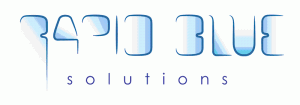 RapidBue Solutions has earlier been working with proximity marketing solutions that use Bluetooth to offer a wide range of content directly to consumers’ mobile phones at point-of-sales, events, and exhibitions. Now the company has finalized a new product offering and is starting to expand more widely into the Nordic countries.
RapidBue Solutions has earlier been working with proximity marketing solutions that use Bluetooth to offer a wide range of content directly to consumers’ mobile phones at point-of-sales, events, and exhibitions. Now the company has finalized a new product offering and is starting to expand more widely into the Nordic countries.
Retailers, exhibition and event organizers, and shopping malls, for example, always need better ways to understand their customers, and in essence, learn about their consumers’ real movements in the physical space. RapidBlue is now aiming to enable them to better market to their customers and track the effectiveness of the marketing actions and layouts based on real consumer behavioral data. The solution works in any area over any time period, and tracks when, where and how the customers move.
 RapidBlue collects the consumer behavior info through Bluetooth technology from the actual visitors’ mobile phones (most of the new low-medium to highend handsets have a Bluetooth feature). The firm uses so called Bluetooth (BT) Universally Unique Identifiers that each BT device has in order to distinguish unique visitors.
RapidBlue collects the consumer behavior info through Bluetooth technology from the actual visitors’ mobile phones (most of the new low-medium to highend handsets have a Bluetooth feature). The firm uses so called Bluetooth (BT) Universally Unique Identifiers that each BT device has in order to distinguish unique visitors.
As RapidBlue only tracks the identifiers of devices, they have no knowledge of the actual identity of the visitors. Hence the firm is convinced their solution is both simpler and better for the consumers’ privacy than solutions based on, for example, tracking GSM network signals from the phones.
With a new customer, RapidBlue will set up Bluetooth surveillance devices in the customer’s premises, and use their proprietary software for tracking the incoming visitors and calculating their routes. For consumers the automatic scanning of the Bluetooth signals is totally invisible. RapidBlue will then construct report(s) for the customer on the consumer behavior after the agreed surveillance period, which could be one-time or continuing over months.
 The images here show examples of the reported behavior the firm provided to one of its customers after a month’s test period. The detailed results include also other stats like the minutes spent on location based on the weekday and the hour of the day, and amount of recurring visits during the tracking period.
The images here show examples of the reported behavior the firm provided to one of its customers after a month’s test period. The detailed results include also other stats like the minutes spent on location based on the weekday and the hour of the day, and amount of recurring visits during the tracking period.
Of course, a challenge with the solution is that not everybody has their mobile’s Bluetooth feature turned on (while, on the other hand, some do not know they have it on). RapidBlue’s Co-founder Sampo Parkkinen tells that generally this has not seemed to be a problem, as in their pilots they have noticed that at least 20% of the visitors have BT on at all times, which is enough to produce reliable results. The estimated total amount of visitors during the test period depicted here is 165,000, while the company estimates they were able to track 26 % of the visitors.
Sampo says that they are now done with the beta period with pilot customers, and are kicking off the internationalization efforts. The company is also further developing the solution to allow for real time tracking of data.
RapidBlue is currently funded by the three founders and a business angel, and is looking for new angel-type financing in the range of several hundreds of thousands to support the internationalization.




